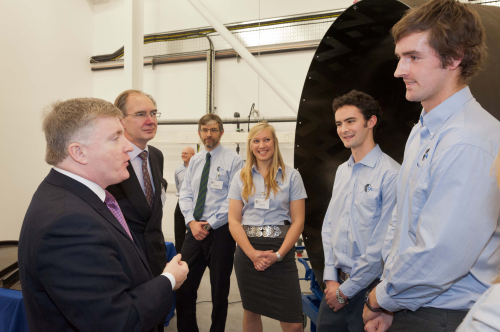
Lightwight composite blades and cases could improve aircraft engine performance and reduce their environmental impact by lowering the overall weight of the engine.
The CTAL facility will employ 70 engineers on the Isle of Wight and has been supported with £7.4 million in funding from the UK government.
|
This state-of-the-art facility gives us an opportunity to develop world leading composite technology and manufacturing techniques. These high technology lightweight components have the potential to significantly improve the competitiveness of our engines and hence reduce the fuel consumption and emissions of future aircraft. |
| Colin Smith, Director of Engineering, Rolls-Royce |
CTAL is a Rolls-Royce and GKN Aerospace joint venture established in 2008 to bring together Rolls-Royce’s expertise in advanced engine technologies with GKN Aerospace’s composite research and automated manufacturing capabilities.
Composite fan blades
The new CTAL facility supports the final stages of work of the UK government funded Environmental Lightweight Fan (ELF) research programme. The goal of this programme, which commenced in 2007, has been to develop, prove and bring to market readiness high-rate production processes for carbon fibre composite engine fan blades. These will improve aircraft performance and reduce engine emissions.
This final phase of ELF work is focused on optimising volume manufacturing processes and is complemented by the addition of lightweight fan systems work under the SILOET (Strategic Investment in LOw-carbon Engine Technology) research programme, also UK government funded. This aims to accelerate the development and introduction of low carbon aircraft engine technology.
The results from the SILOET programme are expected to deliver a 2% improvement in engine fuel economy. The work is expected to finish in 2013.



